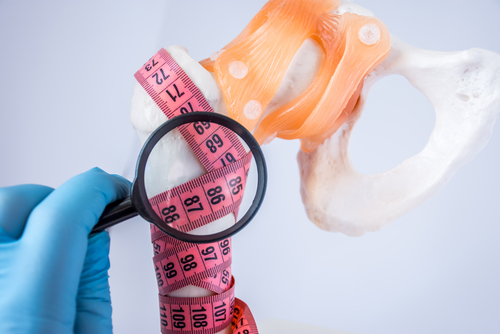Prader-Willi Alters Adult Body Composition, Appetite Regulators, and Bone Density, Study Finds

A new study shows that alterations in body composition, appetite-regulating factors, cardiovascular disease markers, and bone density are common in adults with Prader-Willi syndrome (PWS).
The study, titled “Body composition, adipokines, bone mineral density and bone remodeling markers in relation to IGF-1 levels in adults with Prader-Willi syndrome,” was published in the journal International Journal of Pediatric Endocrinology.
Patients with PWS are characterized by obesity and a high body fat percentage. They are often morbidly obese and have a reduced muscle and lean body mass.
The problem of excessive body fat is present even in nonobese PWS patients.
One of the main causes of excessive weight and body fat in PWS patients is a tendency to overeat and an inability to achieve a feeling of fullness. A malfunction of messenger molecules called appetite-regulating peptides is a potential key element in this process, as these molecules are critical regulators of feeding behavior, including hunger and the sensation of being full.
The body produces different types of appetite regulators, either in the brain or in peripheral organs such as the gut, pancreas, fat tissue, and liver. In PWS patients, some studies suggest that levels of these factors are outside the normal range.
To better understand body dysfunction in PWS patients, researchers investigated the body composition, blood metabolic markers, and appetite-regulating peptides in adults with PWS.
Due to an abnormal secretion of hormones, PWS patients can be at-risk of poor bone health. Therefore, researchers also looked for osteoporosis (weak and porous bones) and osteopenia (very low bone density) by measuring bone mineral density on X-rays and bone remodeling markers in blood and urine.
A total of 15 adult PWS patients were analyzed and compared with 14 healthy brothers and sisters or to reference values.
PWS patients had significantly lower height, fat-free mass, insulin-like growth factor-1 (IGF-1) levels, and bone mineral content when compared with their siblings. In contrast, body mass index, waist-to-hip ratio, and fat mass were higher.
Measurements of bone density revealed that a high prevalence of bone problems existed among PWS patients. Two met the criteria for osteoporosis, and between six and 10 had osteopenia.
Several appetite-regulating peptides — namely leptin and resistin — and a bone-formation marker called osteocalcin were abnormal compared to references.
A significant correlation was found between body composition and appetite-regulating peptides and high-sensitive C-reactive protein, a marker of inflammation and a predictor of cardiovascular disease.
All of these parameters also were associated with insulin resistance as measured by the Homeostasis Model Assessment indicator, or HOMA, a sign of prediabetes.
A possible association between all of these measurements and levels of IGF-1, a hormone important for growth, also were investigated. Low levels of IGF-1 are generally associated with patients with growth hormone deficiency, who have many clinical similarities as PWS patients.
However, no significant association was found between IGF-1, body composition, or appetite-regulating peptides.
“Our results indicate that there is a relation between an increased BMI [body mass index] and a higher level of insulin resistance and low-grade systemic inflammation which is likely to attribute to the high percentage of metabolic and cardiovascular morbidity and mortality that has been described in PWS adults,” the researchers wrote.
“Since there is no cure for PWS and patients with PWS live longer nowadays, prevention and treatment of these complications as early as possible is of great importance,” they added.
According to the researchers, larger studies are needed to further understand the relationship between abnormal body composition, appetite-regulating hormones, decreased bone density, and the metabolic and cardiovascular complications seen in PWS patients.






